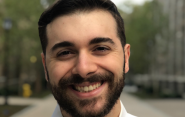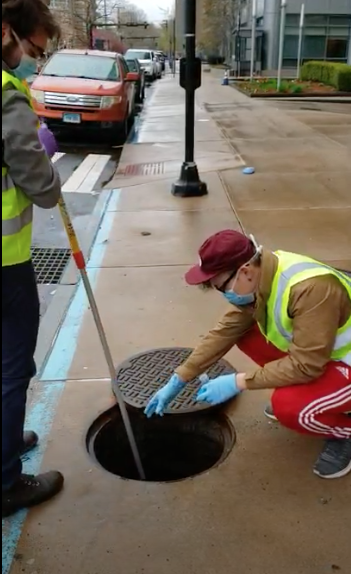Student Spotlight: Alessandro Zulli

Alessandro Zulli had been planning to work over the summer as an environmental consultant for a construction firm back home in southern California, and maybe go to Italy to visit family. Instead, COVID-19 happened, and Zulli spent much of the summer in New Haven reaching down sewer holes with a makeshift instrument to scoop out sludge.
“When things took a turn for the worse with COVID-19, Professor Jordan Peccia asked if I'd be available for a project that was being developed on these wastewater samples from the hospital and various wastewater treatment plans,” said Zulli, a graduate student in Chemical & Environmental Engineering. “And we’d work in the lab to extract RNA and get meaningful data out of it.”
The project, led by Peccia, the Thomas E. Golden, Jr. Professor of Chemical & Environmental Engineering, used wastewater samples to predict COVID-19 outbreaks in communities. The team, which involves several other researchers across campus, initially focused on the New Haven area. It has since partnered with the state and is now collecting samples in numerous locations throughout the state. The researchers have also published their results in Nature Biotech.
In the morning, Zulli would collect samples from the Yale-New Haven Hospital's wastewater treatment system. Using tools fashioned from tubes and other pieces of lab equipment, he scooped up samples from the hospital’s sewage system. On these trips, he would often work with Mike Wang and Dennis Wang, medical students at the Yale School of Medicine at the time. The next stop was the New Haven wastewater treatment plant, where a worker there collected the samples and left them for Zulli to pick up.
The samples would then go to Peccia’s lab on Hillhouse Avenue, where the RNA of the coronavirus is extracted. “As far as the actual lab work goes, the extractions are the longest part by far because, as you can imagine, these samples are incredibly dirty,” he said. “We had to get special permission to work from Yale Environmental Health & Safety, and cleaning them up is a long process that involves a lot of steps. The extraction itself takes probably five to six hours.”
From there, the samples are taken a few blocks over to the Connecticut Agricultural Experiment Station (CAES) where the sludge samples are analyzed to quantify the SARS CoV-2 viral RNA, a process that takes another few hours.
When the semester began, Zulli went back to his regular work of studying nanoparticles and viruses in the environment, divided between the labs of Peccia and Prof. John Fortner, also in Chemical & Environmental Engineering. The project, though, is continuing with Annabelle Pan, a research assistant in Peccia’s lab, taking over much of Zulli’s work.

